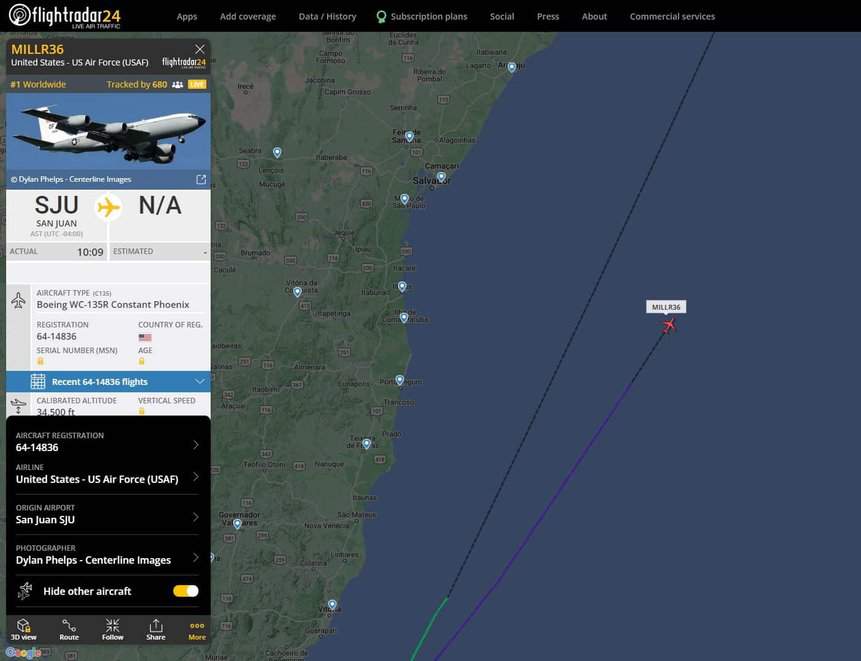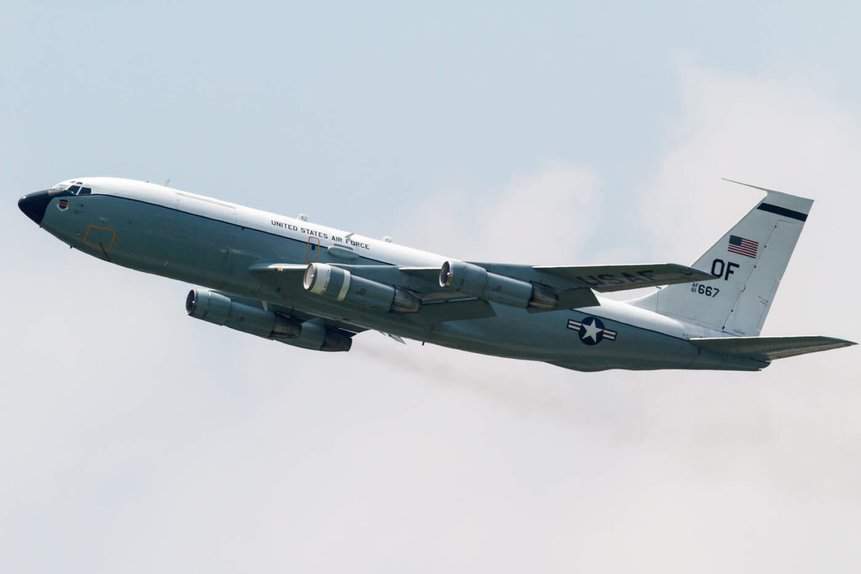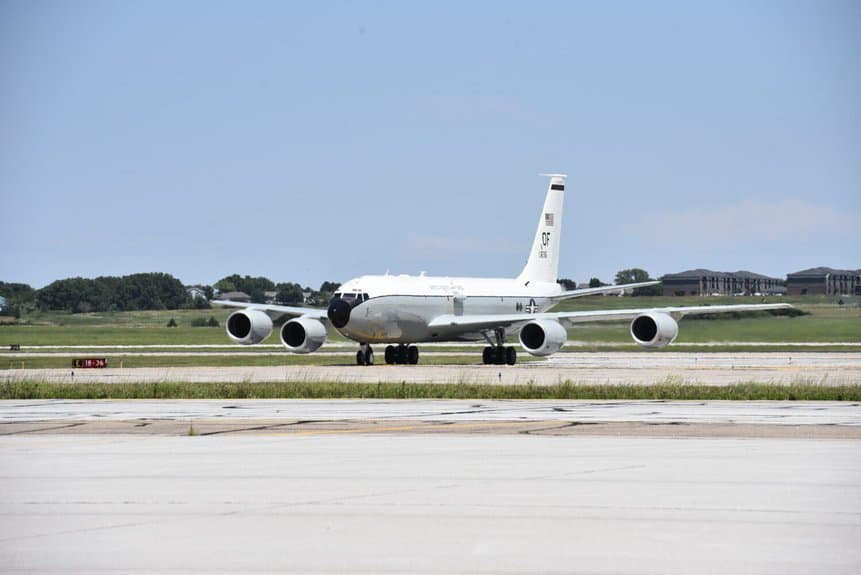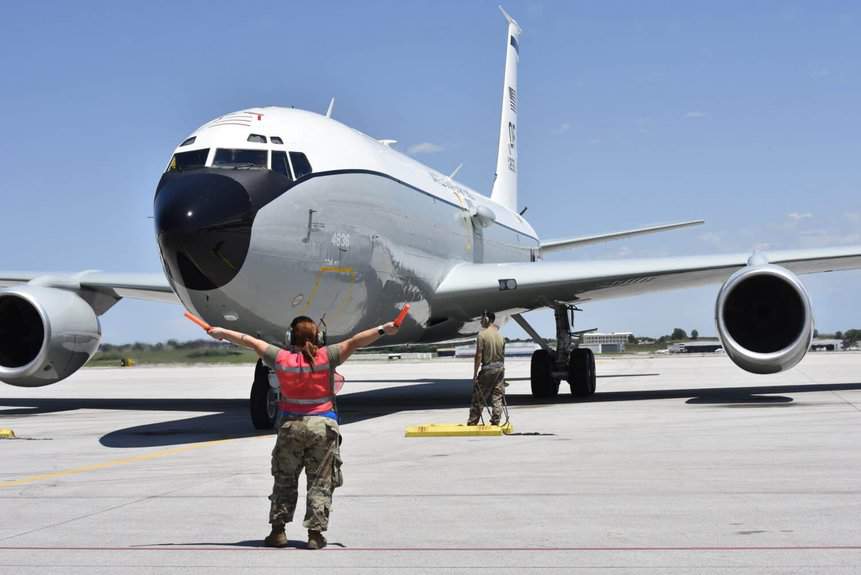The US Air Force (USAF) explained to a foreign portal the reasons behind the unusual flight of a WC-135 Constant Phoenix along the Brazilian coast. The aircraft, also called a “nuclear sniffer”, is used to collect samples of atmospheric air.
The operation of the special aircraft took place last Monday night (16) and drew the attention of several users of flight tracking sites, who followed the WC-135's journey in real time.

The North American intelligence jet took off from San Juan, in Puerto Rico, with the radio code MILLR36 and continued flying along the South American coast alongside countries such as Venezuela, Guyana, Suriname, French Guiana and, finally, Brazil. The plane continued flying high and following the Brazilian coast until it arrived “next to” Rio de Janeiro, where it descended to about 6500 feet, turned around and started the return to San Juan, climbing again.
On the same day, the Aeroflap Portal contacted the Brazilian Air Force and the USAF 55th Wing, operating the aircraft, to determine the reasons for the flight. So far none of the institutions has responded.
However, Susan Romano, director of public relations at the Center for Technical Applications of the Air Force (AFTAC), gave some details of the operation to the portal. The War Zone. This was the first mission of the USAF's "new" WC-135R outside the Continental United States (OCONUS), and the second operational sortie for this nuclear sniffer, registration 64-14836.
64-14836 at San Juan, PR earlier today. https://t.co/iR7xWHOiv8
- Aircraft Spots (@AircraftSpots) January 17, 2023
The aircraft even refueled in flight, having received 90 pounds of fuel from a KC-10 Extender tanker that supported the mission, carried out in coordination with the US Southern Command (USSOUTHCOM). This was the largest fuel transfer for the WC-135R, a former tanker, since the aircraft was received by Offut Air Force Base in July 2022.
“This was the first WC-135 pickup off the central east coast of South America in nearly 30 years”Roman confirmed. “Flying in a different geographic area helps establish a baseline of debris in the atmosphere, which is important for keeping the world safe.”
Also according to the portal, this particular flight was a so-called “baseline” collection mission. The aim is to sample particles from atmospheric air "to establish what atmospheric radiation levels should be like under normal conditions."
🇺🇸Boeing WC-135R Constant Phoenix MILLR36
🇺🇸McDonnell Douglas KC-10A Extender pic.twitter.com/gieWdWTtKV- 360 ° Radar (@wipljw) January 16, 2023
The collection is done as part of the implementation of the Partial Nuclear-Test-Ban Treaty. The 1963 agreement prohibits its signatories from conducting nuclear weapons tests outdoors, in space and underwater. Brazil is one of those signatories. Subsequent detection of elevated levels of radiation could point to testing of nuclear weapons in violation of the treaty, or by countries not party to that agreement, as well as other radiological events.
According to data obtained by The War Zone, this was also not the first time that the WC-135 Constant Phoenix had visited South America since the 1990s. In 2008 one of the older aircraft (WC-135C/W) performed at least three such flights, collectively referred to as Coral missions Phoenix.

“I am extremely proud of the airmen who flew this collection sortie,” Air Force Colonel James A. Finlayson, commander of AFTAC, told the foreign portal. “It takes a lot of collaboration to coordinate all the moving parts on missions like these.”
“This mission is important, not just to the United States, but to our allies and citizens of the world who benefit from AFTAC's analysis of airborne debris and sample collection. Thanks to US Southern Command for their assistance and oversight as well.”
Nuclear Sniffer
Based on the KC-135R Stratotanker tanker platform, the Boeing WC-135R registration 64-14836 was delivered to the US Air Force in June last year, replacing older versions of the model.
Nicknamed Nuclear/Nuke Sniffer (Nuclear Sniffer), the jet is the result of the Constant Phoenix program, originated in 1947. The first WC-135 entered into operation in 1965, replacing the WB-50 (a version of the B-29 bomber) with the 55th Meteorological Reconnaissance Squadron.

The aircraft's mission is quite specific: to detect radioactive particles present in the atmosphere. The USAF says the WC-135 “supports national level customers by collecting particulate and gaseous effluents and debris from accessible regions of the atmosphere in support of the 1963 Limited Nuclear Test Ban Treaty.” That's why his presence always draws attention wherever he goes.
They are currently operated by the 45th Reconnaissance Squadron, subordinate to the 55th Wing at Offutt Air Force Base, in the state of Nebraska. The unit also operates RC-135 Rivet Joint spy planes. The WC-135's sampling equipment is maintained by the AFTAC's 21st Intelligence Squadron.
Do you want to receive our news firsthand? Click Here and be part of our Group on Whatsapp or Telegram.


